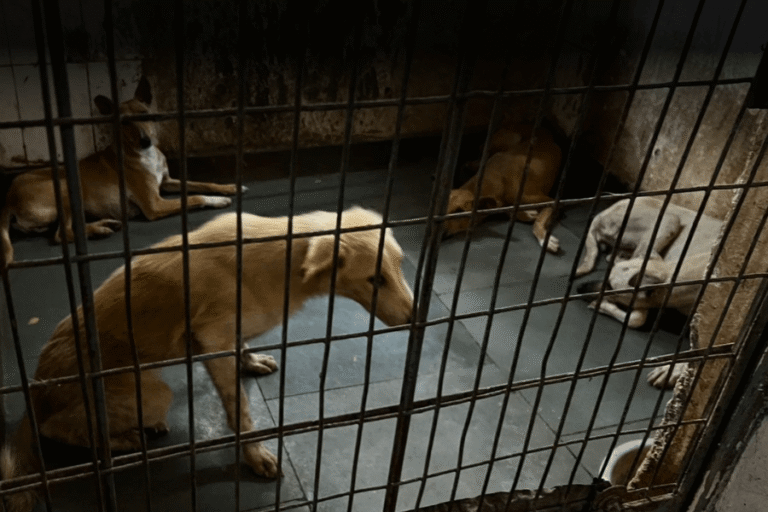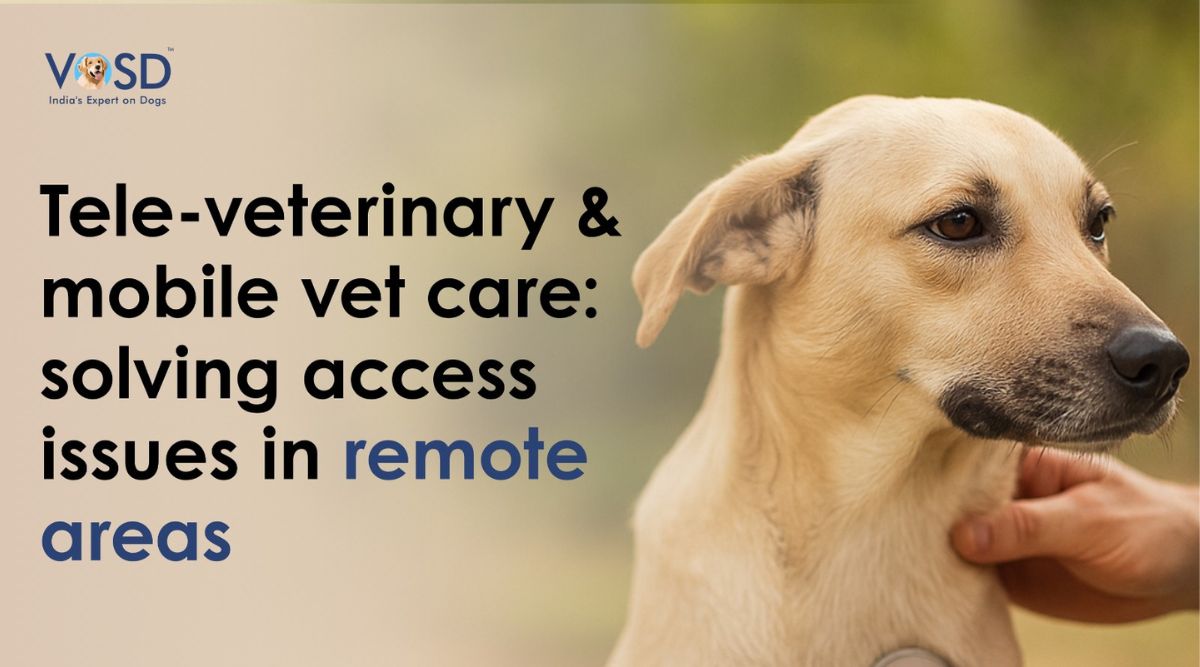1) Scope & Purpose
This document compiles (a) Delhi Government/MCD spending patterns and sterilisation numbers under ABC since 2001; (b) the list and status of ABC centres/shelters in Delhi/NCR funded by the government; and (c) ground conditions at these facilities (Delhi first, then indicative evidence from the rest of India). It is intended to test the feasibility and proportionality of the Supreme Court’s direction dated 11 Aug 2025 on rounding up, sterilising, and permanently housing dogs in shelters across NCR (bench: Justices J.B. Pardiwala & R. Mahadevan). See contemporaneous reportage and extracts for ease of courtroom reference. (www.ndtv.com, India Today)
2) Executive Findings
- Budget priority is persistently low. In MCD’s latest budget, only 0.64% of ₹17,002.66 crore is allotted to veterinary services, far below what shelter-plus-ABC mandates would require. (www.ndtv.com)
- Central ABC funding has been near-zero in recent years. Affidavits referenced in courts and Lok Sabha data indicate no central funds for ABC from 2021–2024/25, with a token ₹4.03 lakh reported in 2020–21. This materially constrains Delhi’s ability to scale ABC. (The Times of India)
- Sterilisation throughput improved after 2014 but remains insufficient. MCD reports ~5.75 lakh sterilisations (2014–Jan 2023) after spending ₹55+ crore in that period; yearly outputs peaked near 1,00,000 pre-pandemic but still fell short of city-wide 70–80% coverage. (Hindustan Times)
- Current capacity is orders of magnitude short. Delhi has ~20 ABC centres, no dedicated long-stay dog shelters, and combined capacity to hold/operate on ~2,500–4,000 dogs at a time—nowhere near what would be needed for permanent sheltering of even 5,000, let alone 200,000+ dogs. (India Today, Business Standard)
- Conditions at centres are poor. Multiple independent ground checks (Aug 11–12, 2025; 2023) document locked or understaffed facilities, overcrowding, unsanitary conditions, poor records, and rule violations. (India Today, ThePrint)
3) ABC Spending & Sterilisation Output — Timeline & Evidence
3.1 Early years & chronic under-spend (2001–2013)
- Policy start: ABC (Dogs) Rules, 2001 came into effect nationally; implementation in Delhi was via MCD through empanelled NGOs.
- Budget utilisation: By Oct 2009, MCD acknowledged it had not been able to spend its annual ₹2 crore budget for catching/sterilising stray dogs “since 2006”; sterilisation fee then was ₹445/dog; cumulative sterilisations by NGOs reported as 1,41,648 up to that point; 2009 census found 2.6 lakh dogs with only ~32% sterilised—well below the 70% threshold. (The Times of India)
3.2 Acceleration phase & post-merger MCD reporting (2014–2023)
MCD/HT dataset (ten-year window):
- 2014–15: 33,125
- 2015–16: 37,990
- 2016–17: 44,635
- 2017–18: 83,656
- 2018–19: 88,175
- 2019–20: 99,997
- 2020–21: 51,990
- 2021–22: 83,461
- Through Jan 2023: cumulative ~5,75,000 sterilisations; ₹55+ crore spent in the 10-year period. (Hindustan Times)
3.3 Latest throughput & projections (2023–2025)
- 2022–23: 59,076 surgeries; 2023–24: 79,959; plan for 97,994 (Apr 2024–Dec 2025) per MCD projections; Jan–Jun 2025 reported 65,031 surgeries. (Business Standard)
- Reimbursement remains ~₹1,000 per surgery, flagged as inadequate by centres. (The Times of India)
3.4 Central government funding status
- 2021–2024/25: Courts recorded no ABC funds to AWBI/States; 2020–21: ₹4.03 lakh cited as last allocation. (The Times of India)
- A TOI Lok Sabha-data story confirms zero ABC funds to States in recent years and reiterates the Centre’s responsibilities under the ABC Rules, 2023. (The Times of India)
Inference: Even in the best recent year(s), Delhi achieved ~1,00,000 sterilisations. The permanent shelter mandate would require massive capex and opex that are not reflected in any budget lines—especially with central ABC support effectively nil for several years.
4) ABC Centres / Dog Shelters in Delhi–NCR (Govt-funded/contracted)
4.1 Count & spread
- Count & throughput: Delhi lists ~20 ABC centres (examples below); no permanent dog shelters; operational capacity ~2,500–4,000 dogs at a time; this includes facilities at Lajpat Nagar (Animal India Trust), Masoodpur/Vasant Kunj (PAWS), Tughlaqabad (Yash Domestic Research Centre), Rohini, Timarpur, Dwarka, Usmanpur, Bijwasan (Friendicoes), Najafgarh (Sonadi Trust), etc. (India Today, Business Standard, ThePrint)
4.2 Facility condition snapshots (August 2025, ground checks)
- Masoodpur (PAWS): overcrowding; absent vet during working hours; dirty premises; multiple dogs crammed per kennel; poor records. (ThePrint)
- Lajpat Nagar (Animal India Trust): locked facility, unresponsive staff during visit window. (India Today)
- Tughlaqabad (Yash DRC): small enclosures; dogs allegedly kept >5 days; log books not produced; prior AWBI suspensions referenced. (India Today)
- Composite finding (India Today, Aug 12, 2025): capacity ≈ 2,500, centres “overcrowded and dirty,” 5-day surgery cycle routinely breached, and no dedicated dog shelters in Delhi. (India Today)
4.3 Prior documentation of functional status (2023)
- High-court report (Jan–Apr 2023 window): 4 of 20 centres non-functional; some run by private vets “with motive of profit”; rule-compliance deficiencies noted. (ThePrint)
Inference: The empirical condition of existing ABC units is incompatible with mass, indefinite housing. The ecosystem is purpose-built for short-stay ABC (capture, sterilise, immunise, release), not permanent warehousing.
5) Budgets, Capacities & Cost Feasibility
- Veterinary line-item: 0.64% of MCD’s ₹17,002.66 crore budget; dwarfed by other heads. (www.ndtv.com)
- Capacity: MCD sources concede 20 ABC centres; no shelters; ≈2,500 dogs can be operated/held at a time. (India Today)
- Cost pressure: Media analyses indicate Delhi underspends its ABC allocations and that shelter-based models would require capital and monthly per-dog costs far above ABC reimbursements (₹1,000/surgery vs. multi-thousand rupees per dog per month to house/feed/care). (Moneycontrol, The Times of India)
Capacity arithmetic: Even assuming 2,500–4,000 holding capacity and ideal turnaround, sheltering 5,000 dogs (the SC’s “first step”) immediately strains infrastructure; permanent housing of 200,000+ dogs is fiscally and logistically infeasible without entirely new infrastructure and budgetary architecture.
6) Conditions Beyond Delhi (Indicative Evidence)
VOSD’s archive documents a decade-plus of systemic failures across multiple States—starvation deaths, electro-euthanasia, botched surgeries, CNVR abuses, lack of anesthesia, etc.—illustrating how poorly-run pounds and contractor models harm dogs and fail public-health goals. Your primary evidence includes original photography and reports (rights with VOSD): Shimla pound starvation; Surat open-entrails CNVR; Bangalore dog-shelter mass deaths; Hyderabad pound abuse; surgeries without anaesthesia, among others.
7) Data Reliability Notes (Bites & Rabies)
As you have argued historically, official rabies and bite tallies are inconsistent. VOSD’s RTI-supporting work contrasts MoHFW/CBHI figures with extrapolated NGO/WHO numbers; we will present those tables alongside government sources to show why policy must rest on verified, local data, not extrapolations. (Your compiled note and RTI link to be appended as exhibits.)
8) How This Interfaces With The 11 Aug 2025 SC Order
- What the order requires: capture; no release; creation of shelters/pounds; 5,000-dog capacity in 6–8 weeks to start; sterilise, deworm, immunise; CCTV; adoption only under protocol; strict liability for infractions. (www.ndtv.com, India Today)
- What Delhi currently has: no dog shelters, ~20 ABC centres, 2,500–4,000 holding/operating capacity; chronic underfunding; documented rule-compliance and hygiene gaps. (India Today, Business Standard)
- Conclusion for feasibility: On present facts, the order’s permanent relocation element is not implementable without: (i) new shelters at industrial scale; (ii) multi-year O&M budgets; (iii) staffing & veterinary expansion; and (iv) a transition framework that does not collapse existing ABC operations.
9) Annex A — Year-wise ABC Sterilisations (Delhi)
|
Year |
Sterilisations (Delhi) |
Source |
|
2006–2009 (cumulative notes) |
Budget ₹2 crore/yr unspent since 2006; NGOs’ cumulative sterilisations 1,41,648 (as of 2009); city dog pop. ~2.6 lakh, ~32% sterilised |
|
|
2014–15 |
33,125 |
|
|
2015–16 |
37,990 |
|
|
2016–17 |
44,635 |
|
|
2017–18 |
83,656 |
|
|
2018–19 |
88,175 |
|
|
2019–20 |
99,997 |
|
|
2020–21 |
51,990 |
|
|
2021–22 |
83,461 |
|
|
2014–Jan 2023 (cum.) |
~5,75,000; spend ₹55+ cr |
|
|
2022–23 |
59,076 |
|
|
2023–24 |
79,959 |
|
|
Apr 2024–Dec 2025 (proj.) |
97,994 (proj.); Jan–Jun 2025 actual 65,031 |
Gaps: 2001–2005, 2010–2013 Delhi-specific annual splits are not published in one place online. We will continue to mine MCD annual reports, Standing Committee minutes, Delhi budget books, and Delhi HC affidavits to extend this table to 2001. For filing now, the 2009 census article plus the 2014–2025 official numbers establish the trend and capacity constraints.
10) Annex B — ABC Centres & Status (Delhi/NCR)
Representative list (govt-contracted/paid): Friendicoes (Ghazipur; Bijwasan), Animal India Trust (Lajpat Nagar), PAWS (Masoodpur/Vasant Kunj), Yash Domestic Research Centre (Tughlaqabad), Sonadi Charitable Trust (Najafgarh), plus MCD units in Rohini, Timarpur, Dwarka, Usmanpur, etc. Functional status varies; multiple reports show non-functional units and rule-compliance issues. (Business Standard, India Today, ThePrint)
Condition evidence (Delhi, Aug 11–12, 2025): unclean premises; absent vets; overcrowding; >5-day holds; logs not shown; “VIP movement” dogs housed at Tughlaqabad. (India Today)
11) What This Establishes (for the SC Bench)
- Scale mismatch: Existing ABC infrastructure is dimensioned for short-stay ABC, not permanent warehousing of community dogs.
- Fiscal impossibility as-is: 0.64% budget share, nil central ABC funding in recent years, and historic under-spending cannot support mass, indefinite sheltering without displacing other public-health services. (www.ndtv.com, The Times of India)
- Public-health efficacy: Sterilise-vaccinate in the community remains the only scalable, humane, and cost-effective method shown to reduce bites/rabies long-term; forced warehousing risks overcrowding, disease, cruelty, and collapse of ABC throughput, worsening risk to people and animals. (The Times of India)








